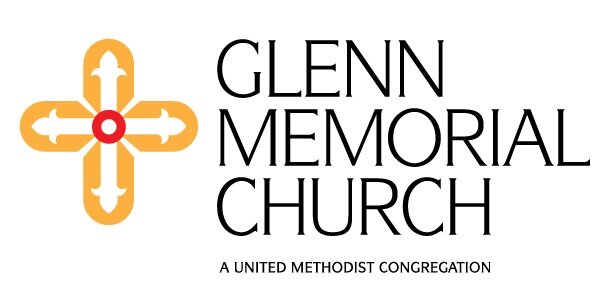This Sunday, April 19, our 8:30 and 11:00 a.m. services will be principally music with brief reflections. The service will feature seven hymns of the British Methodist hymn writer, Fred Pratt Green (1902-2000). Among the greatest hymn writers of the 20th century, he wrote over 300 hymns and Christian songs, 17 of which are in the current United Methodist hymnal. Led by master hymn player Timothy Albrecht and supported by the Glenn Chancel Choir, this service promises an inspiring and moving experience for all.
Given an honorary doctorate by Emory in 1982, Green gave Candler’s Pitts Theology Library his 51 meticulously organized and annotated scrapbooks showing the provenance, development, and publication of most of his hymns and sacred songs.* These provide rare insight into the creative art of this hymnic genius. In a brief video produced by Candler, Professor Robin Leaver of the Yale Institute of Sacred Music introduces this collection: Fred Pratt Green collection.
I had the privilege of spending a few hours in Pitts’ new, state of the art special collections research room - “The Jeschke-Graham Reading Room” - looking into Green’s scrapbooks for information on the hymns to be sung in worship this Sunday. There one may find information and correspondence on the commission of “God is Here,” showing how the hymn changed via input from the Texas church that commissioned it. There is also telling correspondence with my predecessor at Glenn, Sam Young, who, as editor of our hymnal, commissioned Green to write a hymnic paraphrase of Isaiah 55:6-11. This correspondence reveals input from the hymnal psalm text committee which effected important alterations in Green’s hymn, “Seek the Lord.” Green worked hard to accommodate feedback from his commissioners.
Among the reasons Green received so many commissions was his ability as a poet. A master of prosody with theological insight and disciplined craft, he wrote hymns of inspiring beauty and arresting power.
Green’s journey through the creation of “All My Hope is Firmly Grounded” began with a request from eminent English hymnist John Wilson (1905-1992) to write a new translation of Joachim Neander’s 1680 hymn, “Meine Hoffnung Stehet Feste.” Green’s scrapbook entries illumine this journey. You may click on the hyperlinks below to view images of these scrapbook entries.
1. Neander’s German version
2. Literal Prose translation
3. Translations by Catherine Winkworth (1827-1878) and Robert Bridges (1844-1930)
4. Translations by John Jacobi (1670–1750)
5. Green’s version of May, 1986 with notes
6. John Wilson’s May 13, 1986 letter with feedback on Green’s hymn
7. Green’s response to Wilson’s letter
8. Green’s commentary on the process
9. Green’s final version
Supporting the mysteries of poetic inspiration, evident in these documents are very practical considerations affecting the final version of the hymn. We see that Green retained Neander’s original meter and verse structure. This is made clear when Neander’s original is compared to Green’s final version - links 1 and 9 above. Green studied important historic translations - links 3 and 4 - so he could comprehend the choices his predecessors made and he responded to the careful scrutiny of his friend and commissioner John Wilson - links 6 and 7. The latter caused Green to change in stanza 1:
“Who in all life’s circumstances” to –
“Who, whenever I most need him.”
Wilson suggested this change because the melody, MICHAEL by Herbert Howells, would afford only a too brief eighth note to the word “life’s,” and that the word “circumstances” could not be sung elegantly to that tune.
Also in stanza 1, Wilson suggested that “Never fails to keep his word” might be better stated positively. Green responded that sometimes a negative statement is more rhetorically effective. And so it remains.
Wilson challenged implied theology in stanza 2 as suggesting that when humans mature we might no longer need God. Thus, Green changed:
“Who can trust in human nature, Still so weak and immature,” to –
“Tell me, who can trust our nature, Human, weak, and insecure.”
These entries document nuanced evolutions ranging from changing words that are clumsy or inelegant to sing, or rhetorically ineffective, to ideas that might tend to heresy. Learning of these intimate considerations in setting profound theological tenets into hymns enhances our appreciation and empowers the joyful abandon with which we and our successors may sing these hymns into ages to come.
Our final hymn this Sunday is Green’s powerful “Christ is the World’s Light.” His scrapbook entry not only gives information on the provenance of this great hymn, but also reveals how Green began his career as a hymn writer, a career whose works will continue to bring the light of Christ so long as Christians sing.
Steven Darsey
*The materials referenced are from the Fred Pratt Green Papers, MSS 166, Archives and Manuscripts Dept., Pitts Theology Library, Emory University
